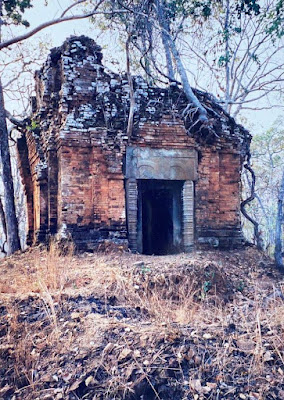Hot Menu
- Home
- Bokator
- Culture
- Entertainment
- Entertainment
- History
- Poetry
- Jobs
- Sports
- Cambodia
- Ideas
- Khmer Website
- Khmer Tipitaka
- Network
- Philosophy
- Ting Mong
- Widgets
- Khmer Library
- Khmer Legends
- Khmer History
- Information Technology
- Khmer Festival
- Template
- Buddhism
- Monks
- Picture
- bokator
- Khmer dictionary
- Comparative Religion
- Khmer Proverbs
- State Institutions
- Astrology
- Khmer Literature
- Literature
- Video Dharma
- Sangkrant Khmer
- English Website
- General Culture
- Khmer Salute
- Linguistics
- Meditation
- Birds of a Feather
- Computer Tips
- Attractions
- Privacy Policy
- About Us
- Site Map
Friday, May 5, 2023
In March, my brother Tim and I managed to cram a visit to 20+ temples at the Koh Ker complex
In March, my brother Tim and I managed to cram a visit to 20+ temples at the Koh Ker complex, in just over half a day. This was a world away from my first-ever visit in late 2001 when landmines made it impossible to visit pretty much anything other than the state temple, Prasat Thom. On my third visit in January 2005 many more temples had been demined though the red skull and crossbones warning signs were still stopping you from wandering off into the forest. Take for example, the single brick sanctuary of Prasat Kraham, which means Red temple, though not to be confused by the grander temple of the same name inside the Prasat Thom complex, further north. The track from the road to the temple and a twenty-meter perimeter around the solitary temple had been cleared of landmines, but venture no further was the stark warning back then. Today, demining is still taking place at Koh Ker, albeit in much less obvious locations. Prasat Kraham isn’t one of Koh Ker’s big-hitters and will be ignored by most visitors, so here is a look at the temple from my March visit and back in 2005. It’s located on the left just after you take the eastern turn-off from the main access road and begin your loop around the temples surrounding the man-made baray known as Rahal. Take into account that the frenzied building of the temple complex of Koh Ker, with well over fifty temples, took place within a twenty-year timespan in the second quarter of the 10th century, under the stewardship of King Jayavarman IV. He brought his capital to Koh Ker, some 120 kilometers northeast of Siem Reap, for the briefest of stints before his son returned the royal court to Angkor. Prasat Kraham was one of the lesser lights, likely constructed towards the middle of the tenth century, and stands on a laterite base, opening to the east with only one doorway, framed in sandstone. Sitting on top of two decorative colonettes is an unfinished lintel with its composition sketched out but not completed. Brick remnants from the collapsed upper section have filled the inside of the sanctuary, with no sign of a pedestal or sculpture to be seen. It has no surrounding wall or obvious entry gopura either. If any excavation work is undertaken in the future at Prasat Kraham, we may learn more about this temple.
Subscribe to:
Post Comments (Atom)
























No comments:
Post a Comment